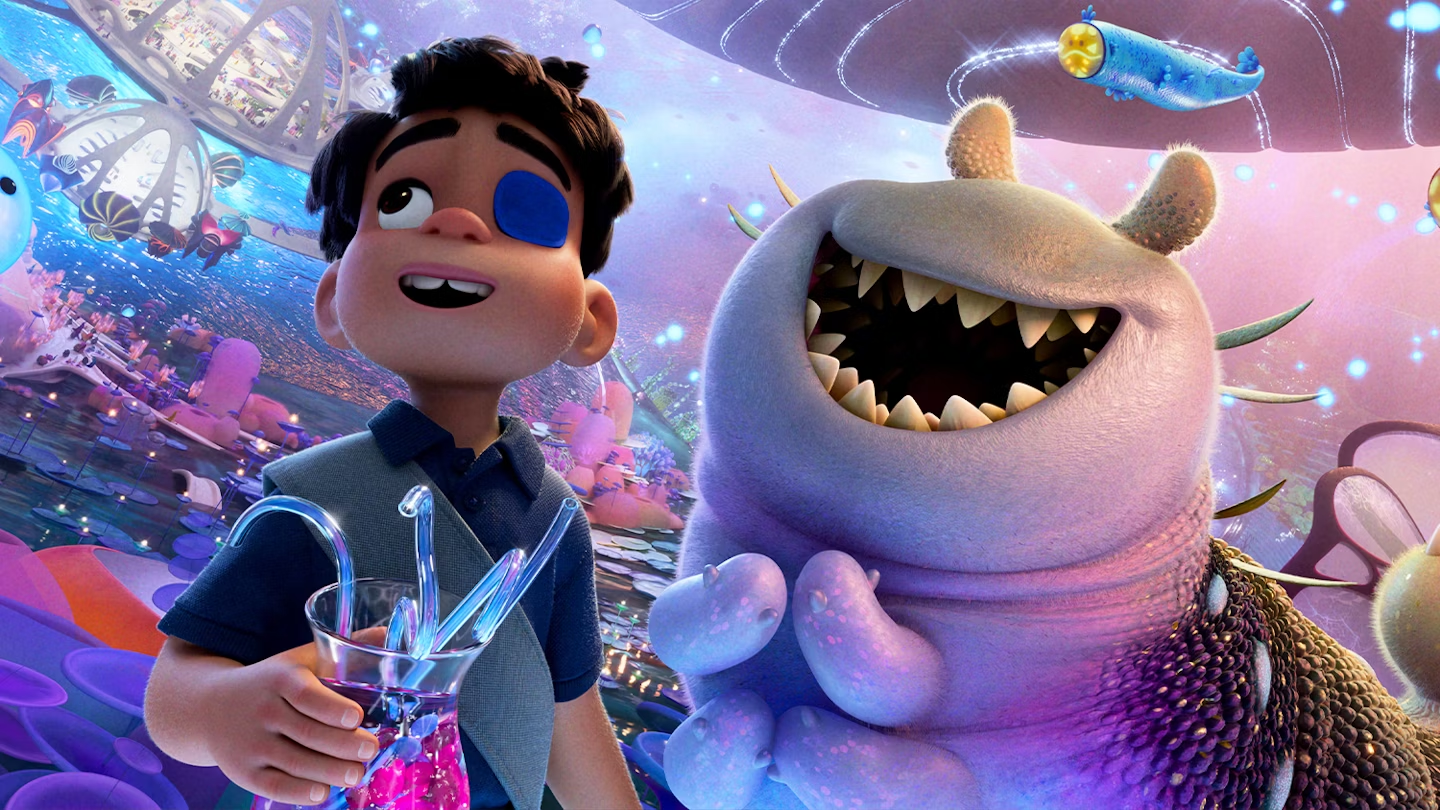In Review: '28 Years Later,' 'Elio'
A zombie classic gets a decades-later sequel that doesn't play by the rules and Pixar delivers a pleasant kids' film.l

28 Years Later
Dir. Danny Boyle
115 min.
For director Danny Boyle and screenwriter Alex Garland to reunite for a sequel to their post-apocalyptic horror film 28 Days Later after a 23-year gap suggests one of those dreary legacy tours where middle-aged bands convert nostalgia into cold hard cash. Yet even those who don’t like 28 Years Later—and given the wild gearshifts in storytelling and tone, plenty won’t—could not accuse Boyle and Garland of cynically playing the hits. To a degree, the new film mirrors the structural surprises of the original, which starts with a viral infection that decimates London and wends its way to a militarized compound outside Manchester that’s experimenting in sex slavery. Yes, Boyle and Garland still have to pay off their hyper-aggressive twist on the zombie movie, but their primary interest, then and now, is how pockets of humanity respond when the world falls apart and survivors have to reinvent society on a new, often radical set of terms.
The Reveal is a reader-supported newsletter dedicated to bringing you great essays, reviews and conversation about movies. While both free and paid subscriptions are available, please consider a paid subscription to support our long-term sustainability.
The opening titles inform us that 28 years after the “rage virus” escaped a laboratory and infected much of the populace, the illness has been largely contained within the United Kingdom. One resilient community has managed to survive on a small island separated from the mainland by a well-guarded causeway that’s traversable only during low tide. Naturally, children are raised from an early age to defend the island from attack, including Spike (Alfie Williams), a 12-year-old preparing for his first training mission on the mainland, where he’s accompanied by his father Jaime (Aaron Taylor-Johnson). Spike’s mother Isla (Jodie Comer) is bedridden with an unknown illness that has led to memory loss and there are rumors of a doctor across the sea who may be able to help her. But in this environment, simply surviving the day tends to take precedent over long-term care.
Reuniting with cinematographer Anthony Dod Mantle, whose grimy digital-video photography gave 28 Days Later a home-movie verisimilitude, Boyle has made a slicker film with 28 Years Later, but he and Dod Mantle are still in experimental mode, shooting largely on an iPhone 15 Pro Max that amplifies and distorts color while putting the same premium on immediacy. The action sequences are underscored by a flurry of archival battle footage and stop-and-go freeze-frame violence, and, if anything, the visceral punch of the earlier film has been accelerated, in part because the “infected” have mostly lost human hosts to feast on. Some of them have also evolved in beings that now have the intelligence to support their animal ruthlessness. One of the scariest aspects of the film is how much regular humans are completely overmatched. That’s rarely a case in zombie movies—or monster movies of any kind, for that matter.
It’s the final third of 28 Years Later, when Spike and his mother strike out to look for the doctor, that the film grows truly audacious, nearly abandoning all horror convention in order to pursue themes more common to Garland projects about broken civilizations and the way survivors reckon with them. Boyle and Garland reject the verse-chorus-verse rhythms of most genre films and grapple instead with madness and death, along with the hardscrabble life of a boy whose future is bound in grim uncertainty. (Blockbuster horror films tend not to evoke Ken Loach’s Kes or the Brando scenes in Apocalypse Now.) To go back to the legacy tour analogy, 28 Years Later is the type of reunion where the old hits are packaged in a medley and the new songs are energized, off-the-wall bangers. Sequels aren’t supposed to be behave like this. — Scott Tobias
28 Years Later opens in theaters everywhere tonight.


Elio
Dir. Adrian Molina, Domee Shi, Madeline Sharafian
98 min.
Elio’s a lonely kid who really hopes we’re not alone. The hero of Pixar’s latest feature, Elio (voiced by Yonas Kibreab) lives with his aunt Olga (Zoe Saldaña), an Air Force officer who’s had to pass on a chance to train as an astronaut in order to take care of Elio after his parents’ death. For Olga, he’s an unexpected responsibility, and Elio knows this. That he’s not an unwanted responsibility isn’t always so clear. So, seemingly unable to get the love and affection he needs on Earth (a difficulty making friends doesn’t help matters), Elio looks to the stars, even going so far as to try to be abducted by aliens by laying on the beach and writing his desire to be taken to the stars in the sand. It’s a silly plan—until it works.
That’s a pretty clever jumping-off point for a film that goes to some fantastic places without shaking the sense that it’s playing it safe. Elio’s abductors, it turns out, aren’t really abductors at all but a concerned group of interstellar residents called the Communiverse who need some help repelling the aggressions of the tough-talking Lord Grigon (Brad Garrett). Surely Elio, as a powerful Earth representative, can help, right? Not wanting to out himself as just an ordinary kid—and relieved that the Communiverse has thoughtfully sent a clone back to Earth so his aunt doesn’t worry about him—Elio plays along, a decision that doesn’t get the desired results but does allow him to befriend Grigon’s son Glordon (Remy Edgerly), a similarly sweet misfit who’s developed decidedly mixed feelings about sealing his caterpillar like body in the armored mechanical shell that will allow him to take his place by his father’s side.
If Elemental proved anything, it’s that Pixar’s 2020s films have a baseline. Even the company’s weaker efforts are filled with imaginative designs, well-honed storytelling skills, and at least a couple of moments sure to affect even the most tug-resistant heartstrings. If anything, Pixar’s current era is a bit underrated, thanks to the muted mid-pandemic releases of the terrific Soul, Turning Red, and Luca. But ‘20s Pixar has also produced films that are not-quite-there in one way or another. Elio is one of these, at least in part because Elio, though winningly performed, never becomes a particularly notable character. He’s cheerful, energetic, eager to please, and easy to forget. It makes all the sense in the world—and the rest of the universe—that the movie bears his name. —Keith Phipps
Elio begins visiting theaters tonight.





Discussion